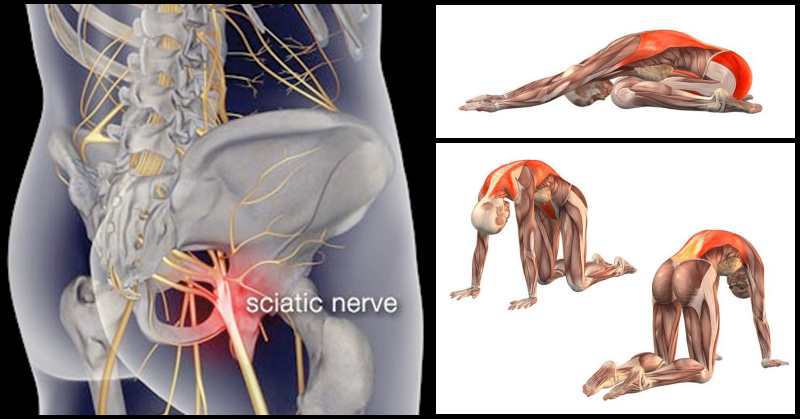When managing sciatica, it’s important to understand that what you should avoid in your exercise routine is just as crucial as what you should do. While exercise benefits your overall health, certain movements can worsen the discomfort and hinder your recovery. You can prevent additional discomfort and support a safer healing process by being aware of the sciatica exercises to avoid.
What You Should Avoid
Avoiding certain exercises that can potentially worsen your condition is crucial to protect your sciatic nerve. These include lifting both legs off the ground, engaging in high-impact training, squats, twisting or rotating the torso, and bending forward with straight legs.
The worst offenders for sciatica are double leg lifts, leg circles, bent-over rows, and forward bends. Avoiding these exercises can minimize the risk of further injury and promote a safer and more effective recovery.
5 Exercises You Should Stay Clear Of
Heavyweight Squats and Deadlifts
Weightlifting exercises such as heavy squats and deadlifts can strain the lower back excessively, worsening sciatic pain. These exercises require proper form and technique to avoid unnecessary stress on the sciatic nerve.
If you already have sciatica, it is best to avoid these exercises altogether until the pain subsides. It’s also good to receive guidance from a healthcare professional or certified trainer who can provide modified alternatives.
High-Impact Aerobic Exercises
Activities with significant impact, such as running, jumping, or high-impact aerobics, can jolt the spine and increase pressure on the sciatic nerve. Repetitive pounding can aggravate the condition and increase pain and discomfort.
Instead, opt for low-impact exercises like swimming, cycling, or the elliptical machine, which all provide cardiovascular benefits without straining the affected area.
Straight-Legged Sit-Ups
Traditional sit-ups that involve lifting the upper body off the ground with straight legs can cause excessive strain on the lower back and trigger sciatic nerve pain. These exercises put pressure on the discs in the lumbar spine and can worsen sciatic nerve compression.
It’s best to go for modified abdominal exercises, such as partial crunches or activities that engage the core muscles without excessive strain on the lower back.
Deep Forward Bends
Deep forward bending movements, such as toe touches or a standing forward bend (Uttanasana), can strain the sciatic nerve and increase discomfort. These exercises can cause the spine to flex and compress the nerve further. It is advisable to avoid deep forward bends and opt for gentler stretching exercises that focus on lengthening and opening the muscles in the hips and lower back.
Full Range of Motion Leg Presses
Leg presses, especially when performed with a full range of motion, can place significant stress on the lower back and increase pressure on the sciatic nerve. The deep bending movement in leg presses can exacerbate sciatic pain, particularly if you are lifting heavy weights.
Consider using modified leg exercises that reduce the range of motion and focus on strengthening the leg muscles without straining the lower back.
Recommended Exercises for Sciatica Relief
In addition to avoiding exercises that can aggravate sciatic pain, it’s important to incorporate activities that promote flexibility, strength, and stability.
Gentle stretching exercises can help relieve muscle tension and reduce pressure on the sciatic nerve. Some beneficial stretches for sciatica include:
- Piriformis Stretch: Lie on your back and cross one leg over the opposite knee, gently pulling the crossed leg toward your chest.
- Knee-to-Chest Stretch: Lie on your back, bring one knee toward your chest, and hold the position for a few seconds.
- Hamstring Stretch: Lie on your back and lift one extended leg off the ground, gently pulling it toward your chest until you feel a stretch in the back of your thigh.
It’s also beneficial to include exercises that strengthen the core muscles, such as modified planks or pelvic tilts, as a strong core can provide better support to the lower back.
Low-impact aerobic activities like walking or swimming can improve circulation and promote healing without putting excessive strain on the sciatic nerve. Always listen to your body and consult a healthcare professional or certified trainer to determine the most suitable exercises for your specific needs and condition.
Stay Alert on the Exercises to Avoid If You Have Sciatica
Avoiding exercises that can worsen sciatic pain and focusing on recommended exercises allows you to take control of your healing journey and experience relief. You can work toward a healthier, pain-free lifestyle with determination and guidance. Stay positive, be consistent, and enjoy the progress toward improved well-being.

